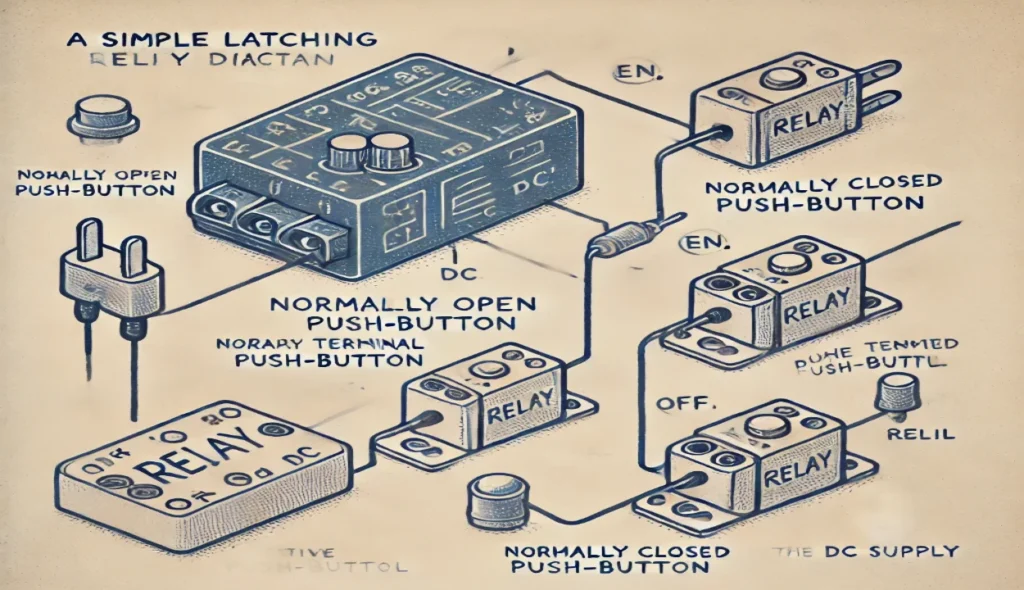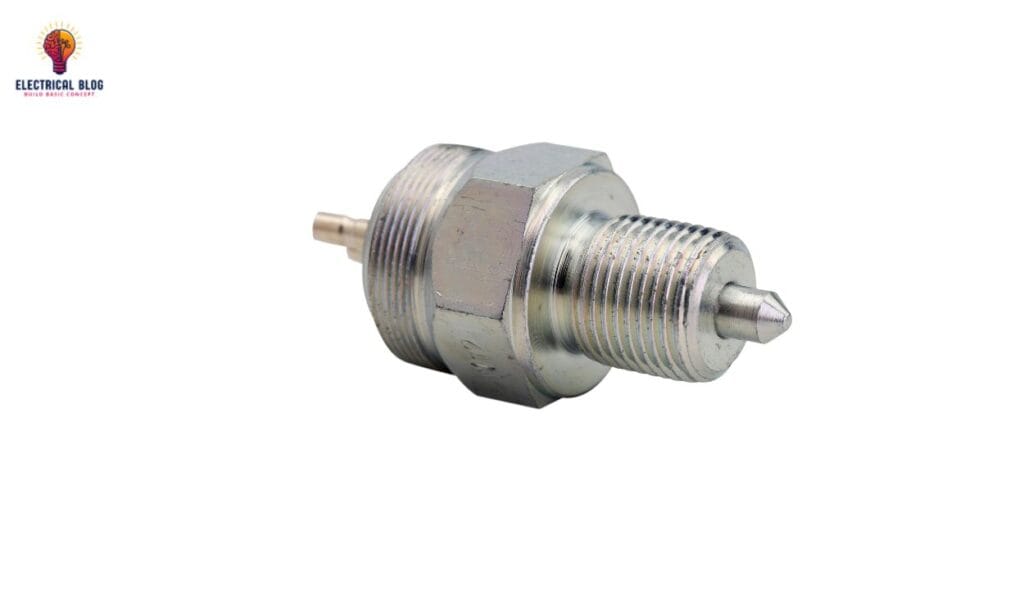Introduction
Relays are essential components in electrical systems for circuit control. What makes latching relays unique is their bistable nature, meaning they have two stable positions—set and reset—without needing constant power. This article explores their working, highlighting their efficient use in applications where the conservation of energy is vital. Unlike standard relays that require continuous operation, these are characterized by their ability to remain actuated until an external signal changes their state, offering advantages in diverse industrial and automation settings.
What are latching relays?
A relay is an essential component in electrical circuits, allowing an operator to control power flow efficiently. Unlike standard relays, latching relays use a unique structure to hold their position even without continuous power. They are designed to retain their last position, meaning they do not need further input to stay activated. This feature contrasts with non-latching relays, which require a steady electromagnetic current to remain in a state.
Latching relays work using either a magnetic or mechanical system, each with its own distinction. The electrical input sends an input signal, which moves the contacts to open or close the circuit. This action completes or breaks the transmission of the signal to the connected devices. Some models use a single-winding or double-winding coil to enhance performance, helping to manage larger currents effectively.
The function of these relays is simple yet powerful. When actuated, they switch to a set or reset state and remain there until a pulse from an external source explicitly tells them to switch back. This makes them ideal for applications requiring amplification or switch-off controls, particularly in automation and industrial setups. The generic term “latching relay” implies that they can operate across various switching devices with particular features.
Latching relays are also known for their physical locking mechanism, which prevents accidental changes in position. Unlike a general-purpose relay, they are often forced into an opposite state rather than naturally switching. This feature makes them reliable in situations where stability is critical. Whether used in security systems, power grids, or machinery, latching relays ensure steady output and efficient energy use. You can also read oil surge relay.
latching relay diagram

How latching relays work
Latching relays are made of key components like solenoids, coils, and a metal strip known as the armature. When a low input current is applied, it generates a magnetic field that pushes or pulls the armature. This switching action allows the relay to complete or break the circuit, or even switch power between separate circuits. The armature is often suspended between terminals and moves to the last position when activated.
The relay is bistable, meaning it stays in its last position until a further pulse of current forces it to change states. This is different from non-latching relays, which need continuous power to stay activated. The armature can transition from one state to another, either by pulling or pushing. The relay’s characteristic of retaining its position helps save power and makes it more efficient for extended use periods.
Unlike general-purpose relays, latching relays only require brief voltage pulses to switch between states, which lowers their power draw. They can be built using copper wire in the coils for low resistance and better power transmission. This makes them ideal for applications where stability and efficiency are needed, especially in electromagnetic relays and mechanical systems. You can also read buchholz relay.
Types of Latching Relays
There are several types of latching relays available, each designed for specific functions:
Single-coil relays require a current pulse with a reversed input flow direction to actuate the metal strip and switch between terminals.
Dual coil relays feature individual set/reset coils, allowing a voltage pulse to be applied to either coil to perform the required action.
Magnetic and mechanical switch types in the market provide reliable solutions, each operating with different coil variants.
Magnetic Latching Relays
Magnetic latching relays use a pulse of current to generate an electrical field that moves a reed switch in one direction. Once the pulse stops, the relay remains held in that position until another redirected pulse moves it to the opposite position. This ability to stay in the last position makes it highly useful for applications where current flow must be carefully controlled without causing an undesired effect.
These relays are known for their low power draw, which is a common feature of all latching relays. Since they don’t need continuous switching, they are more efficient than other types of relays. Magnetic latching relays tend to be less bulky than mechanical variants, making them ideal for compact applications.
In addition to saving space, these relays offer a longer lifespan due to the minimal physical movement involved in the switching process. The switching action is quick and requires little effort, which contributes to their efficiency and durability over time.
Mechanical Latching Relays
Mechanical latching relays use a physical locking mechanism to hold the armature in place. When the relay is activated, the contact is moved to a specific position and stays there until another action occurs. They are often better at handling surge currents, making them suitable for environments with sudden power spikes.
However, mechanical latching relays tend to be larger and less flexible in terms of space requirements compared to magnetic latching relays. The speed of switching is also limited due to the extent of mechanical movement involved. This makes them less efficient for fast-switching applications.
Their projected lifetime is often shorter than that of magnetic relays, but they perform better under higher loads. Thermal cycling does not weaken their contacts as quickly as with electromagnetic versions, which can make them more reliable over time, especially in tough environments.
Impulse Latching Relays
Impulse latching relays are a type of magnetic latching relay that change their contact state with each input pulse. When power is applied, the relay automatically determines the position of the switch and energizes the opposite coil to move the switch. This allows for easy switching without needing to reverse the polarity or redirect the control pulse.
These relays are often used in applications where a momentary switch or push button is required to turn a single device on or off. The impulse switches work with a solid-state steering circuit, making them unidirectional, which simplifies their operation in various locations. They provide a reliable way to control devices from multiple points with minimal effort.
Applications of Latching Relays
Latching relays are widely used in battery-powered devices to conserve power and control circuits without draining the battery. They are also helpful in utility meters like electric, gas, and water meters, where they can control remotely without a constant power supply. In smart lighting and building automation, they enable energy savings by switching lights on and off without continuous power.
For security systems, they maintain the last state of locks and electrical components during power interruptions. Medical devices also use latching relays to ensure state retention and avoid unnecessary power usage. However, they may not be ideal for high-speed switching or frequent switching, where normal relays excel in handling rapid changes and fast switching. In simple on/off control applications, normal relays are more cost-effective for basic applications like turning lights on and off.
Battery-powered devices
Utility meters
Smart lighting
Security systems
State retention
Medical devices
Normal relays
How to Make a Latching Relay Circuit
Connect the relay with a push button and DC supply. Upon pressing the push button, the relay activates. Once the button is released, the relay remains in the ON position and stays there without needing any further input.
Connect the common point of the relay to the source through the push-button. When the button is pressed, the supply to the relay is on. Once the button is released, the supply is disconnected, but the relay remains on because it is powered directly from the DC line, ensuring it stays on continuously.
Add an extra push button, normally closed (NC), to disconnect the supply. When pressed, this button will turn OFF the relay. To turn ON the supply, use push button 1, and to turn OFF the supply, use push button.
Latching Relay Circuit Diagram

Selection Criteria
Supply Voltage and Control Voltage: When selecting a latching relay, it’s important to consider the supply voltage and control voltage to ensure compatibility with your system. The relay must support both AC and DC applications, depending on your requirements. The control voltage dictates the power needed to operate the relay, and the correct range ensures the relay will work reliably without failure. It’s crucial to choose a relay that matches the voltage levels of your system for efficient operation.
Modular Spacing and Clearance: Another factor to consider is the modular spacing, typically 17.5 mm, which determines how much space the relay will occupy on a panel or DIN rail. The width of the relay is determined by this spacing, and it is essential for planning the wiring and installation. Modular spacings ensure the relay fits well into existing setups, minimizing reconfiguration efforts. Proper clearance is also important for ventilation and maintenance, ensuring the relay stays functional over time.
Number of Contacts: The number of contacts plays a major role in determining the relay’s versatility. Change-over contacts (also known as Form C) allow you to redirect current between different circuit paths, offering more control over multiple circuits. Normally open contacts and normally closed contacts also need to be considered, depending on whether you want current to flow when the relay is unenergized or energized. These options make relays suitable for various applications, from fluorescent lighting to incandescent light bulbs.
Load Rating and Switch Load: You must also match the load rating of the relay with the power requirements of your devices. For example, a relay with a higher incandescent lamp load rating can handle more power, which is vital when controlling high-wattage devices. Similarly, for fluorescent lamps, the relay should be able to handle a fluorescent lighting load of at least the total wattage required. The switch load is crucial to ensure the relay can switch devices without damage.
Built-in Depth and Mounting Style: Finally, always consider the built-in depth and panel mounting style. The depth ensures proper fitting and clearance for ventilation and maintenance. Accidental contact with exposed parts can cause damage, so the front plate should be designed for protection. A flush-mounted relay provides a clean, unobtrusive appearance, making it suitable for professional installations where aesthetics and protection are important.
Difference Between Latching and Non-Latching Relays
| Feature | Latching Relays | Non-Latching Relays |
|---|---|---|
| Position Retention | Stays in the last position when powered last | Always returns to its regular position |
| Power Consumption | Only needs power during the state change, low consumption | Requires continuous power to maintain the state, higher consumption |
| Coils | Can have single coil or dual coil | Typically only has single coil |
| Manual Control | Often has indicating knobs for manual control | Does not have manual control or knobs |
| Switching Noise | Noiseless switching | Noisy |
| Complexity | More complex due to state retention | Simpler design, easier to use |
| Applications | Suitable for memory functions, alarm systems | Suited for general switching applications |
| Cost | Expensive | Less costly, more affordable |
Conclusion
Latching relays are useful in various applications where you need the relay to stay in its last position even after power is removed. These relays save power and provide state retention, making them ideal for battery-powered devices, utility meters, and lighting control systems. By using push buttons and a DC supply, you can easily set up a latching relay circuit to control the relay without the need for continuous power. While latching relays are more complex and expensive, they are valuable for their ability to maintain the ON state without constant power, unlike non-latching relays that require power to hold the state.


